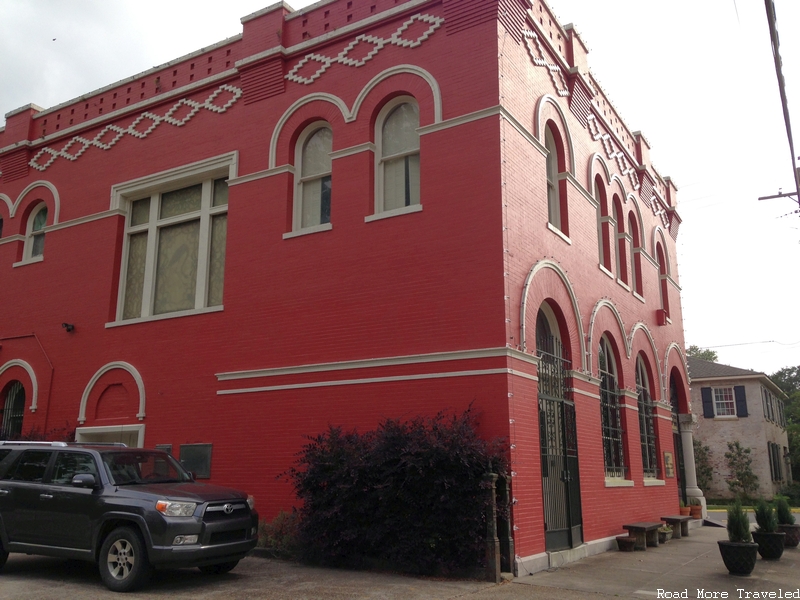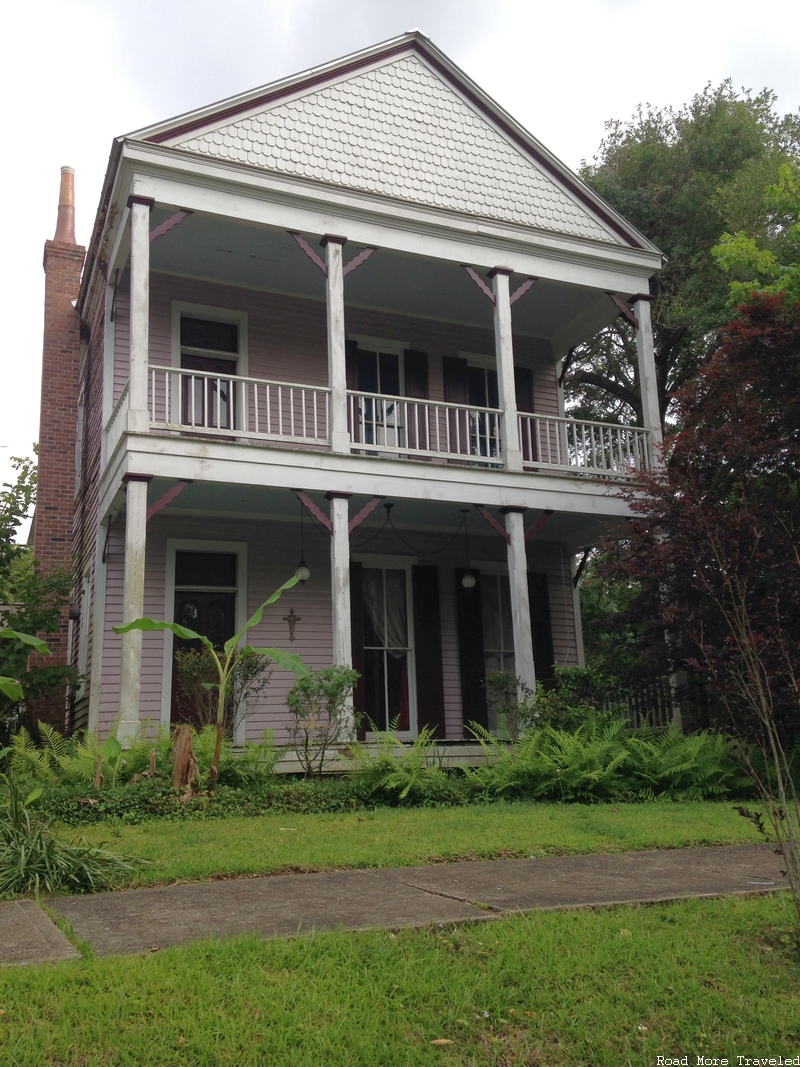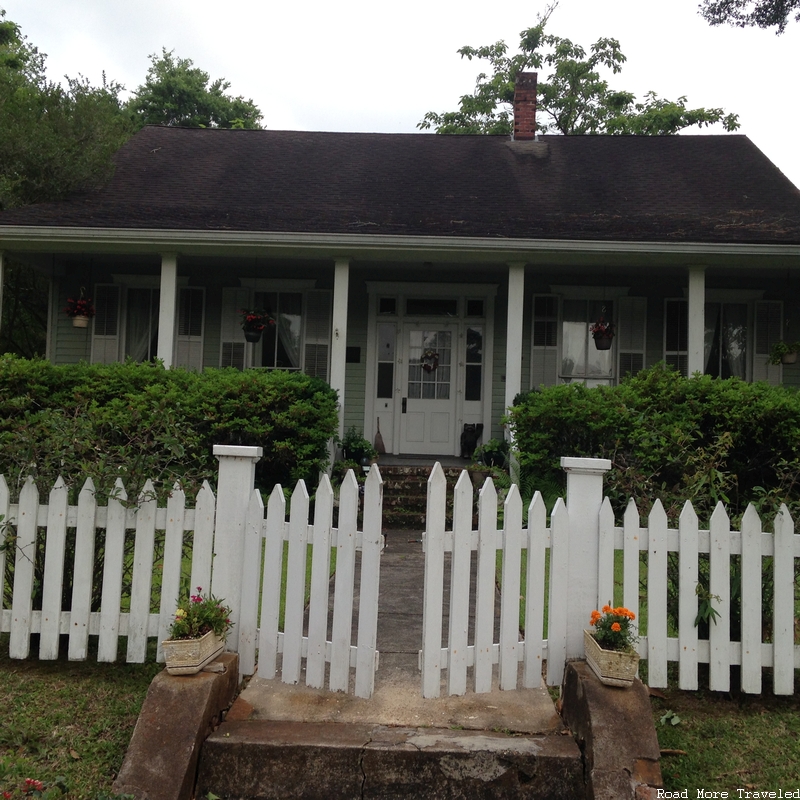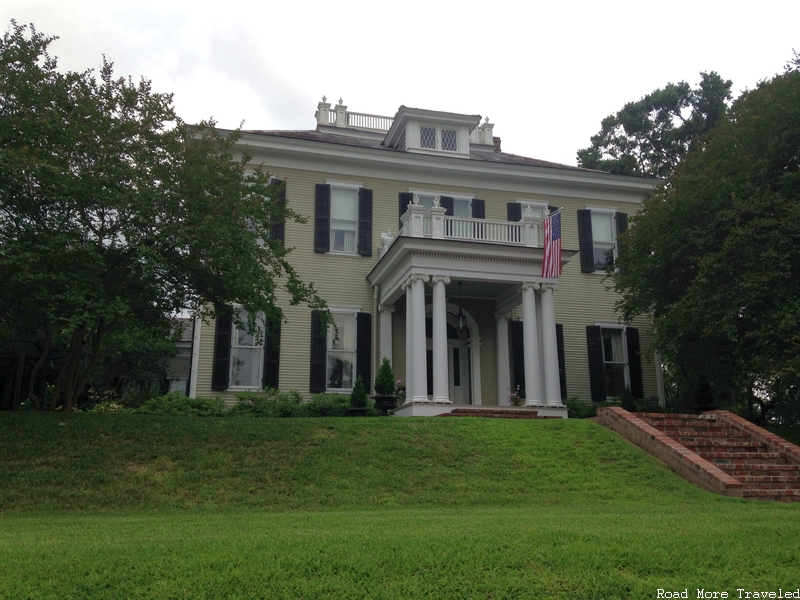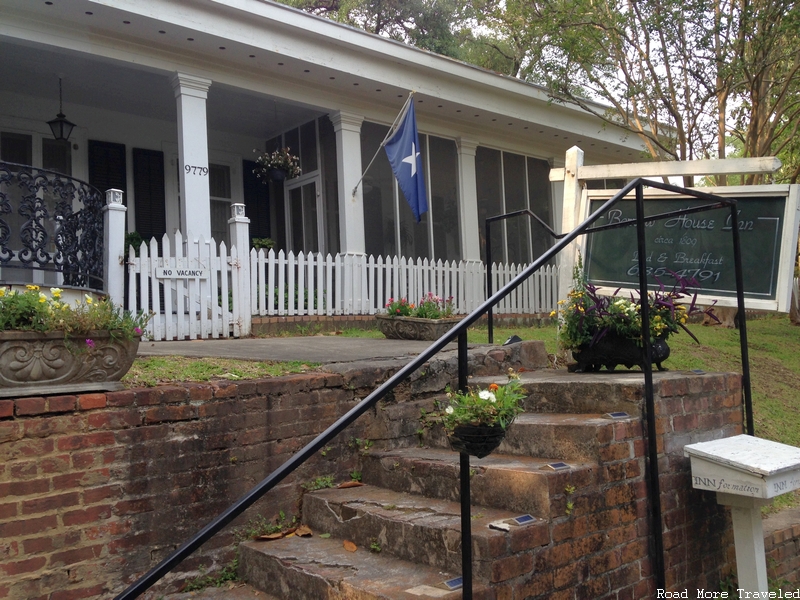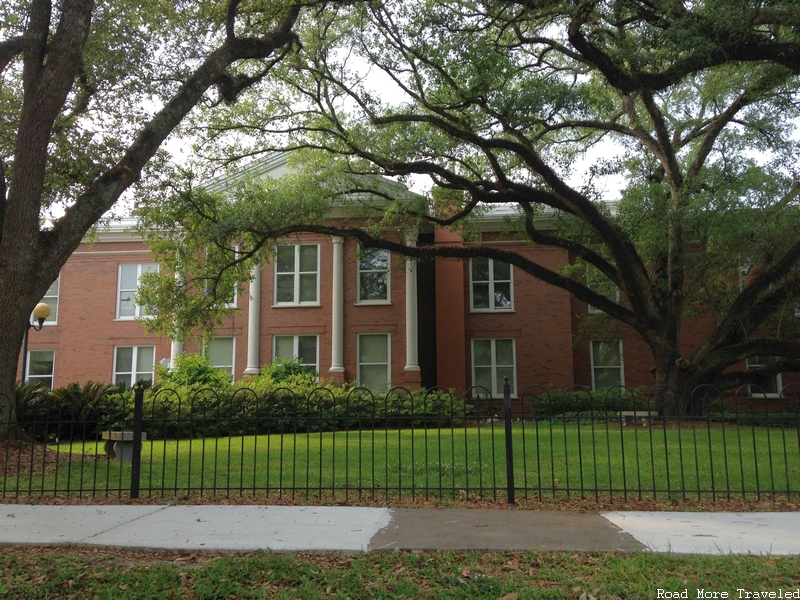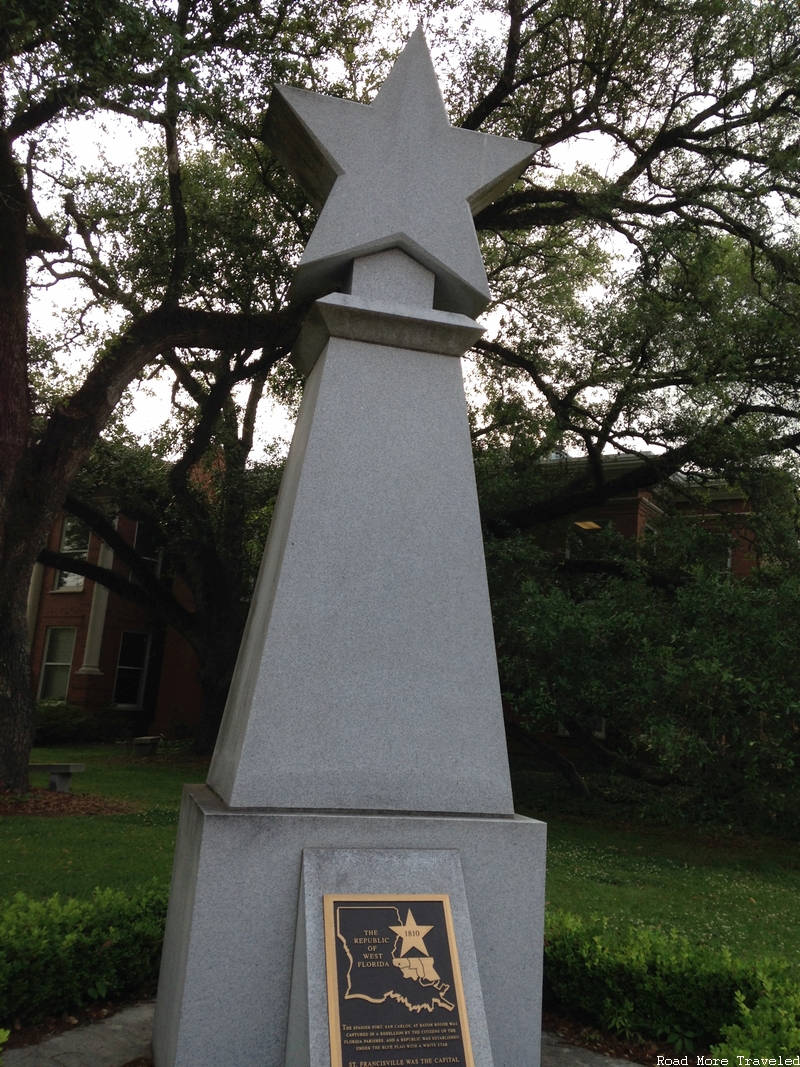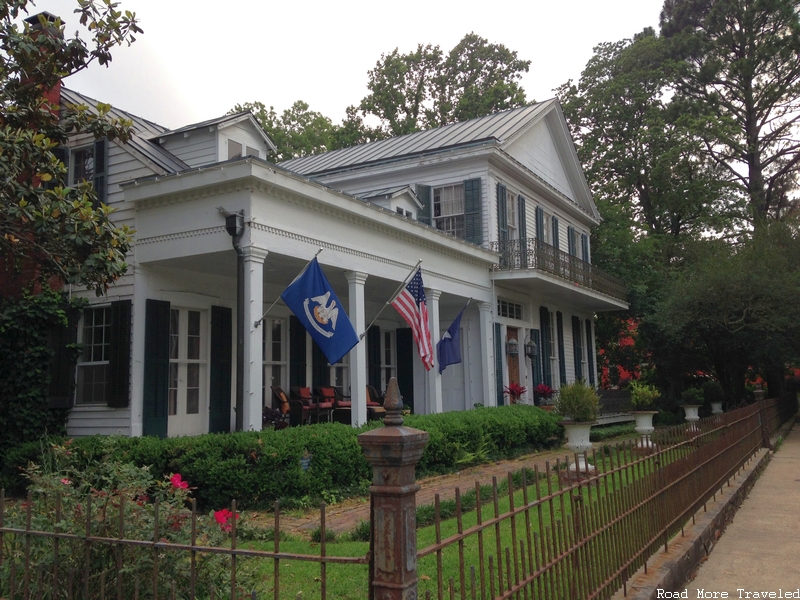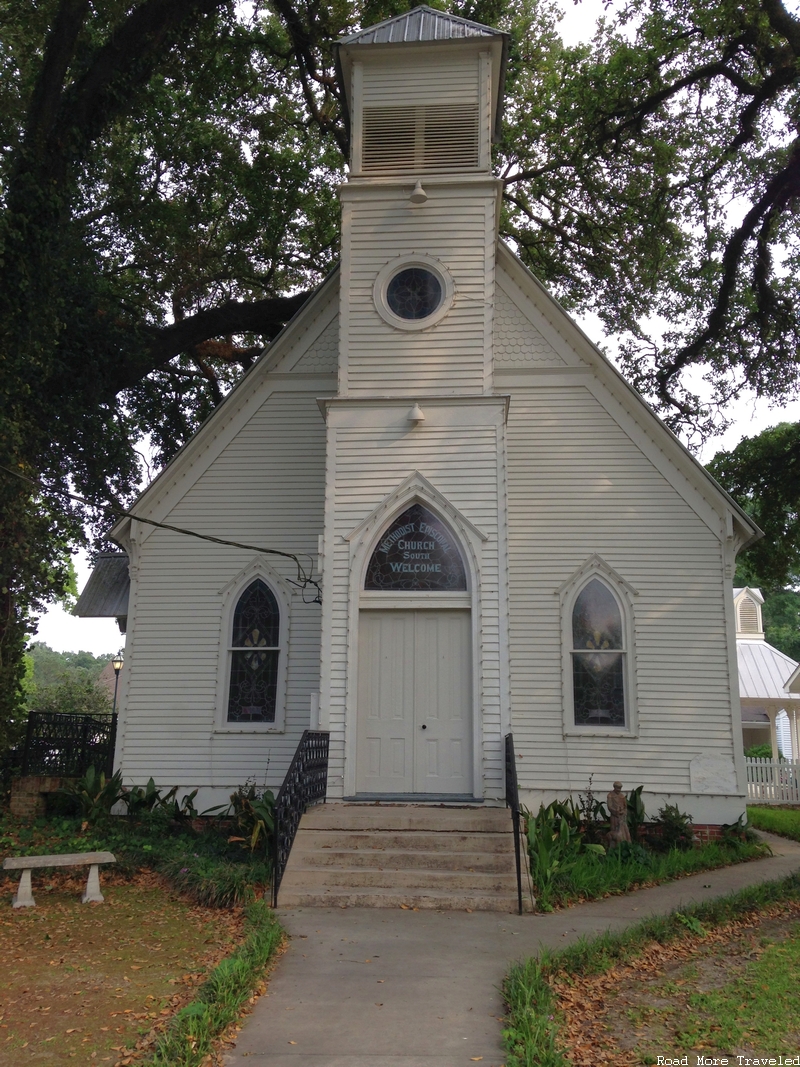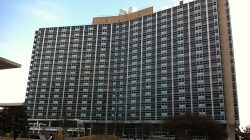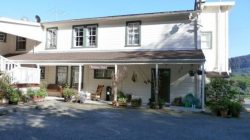Returning from our beach vacation in Gulf Shores, we swung north from Baton Rouge rather than take the direct route. Originally, we planned a stop at Rosedown Plantation, an historic plantation about 30 miles north in St Francisville. I figured we’d get there about 2 pm, so it would make for a good spot to get the baby a walk. Unfortunately, a certain member of our party couldn’t get ready in the morning (not the baby, mind you). The delay meant we wouldn’t make it before closing time. The nice thing about road tripping, though, is the ability to improvise. I’d heard St Francisville itself is a hub for preserved antebellum homes. Right on cue, Ashok started getting cranky just as we reached town. Perfect timing to break out the stroller and discover the historic homes of St Francisville Louisiana.
Getting There
St Francisville is 32 miles north of Baton Rouge on US Highway 61. The easy drive takes 35-40 minutes. To reach the historic district, turn left at Commerce Street (Highway 3057) just south of town. Then, turn left at Ferdinand Street (Highway 1248), then left again at Royal Street. You’ll see a sign directing you to turn left for historic homes. Finally, park anywhere along the street and start walking.
The Historic Homes of St Francisville Louisiana
Beautiful old homes and buildings line Royal Street from end to end, roughly 1/2 mile in length. I’ve picked a few of my favorites for this post. We parked and began our tour about halfway down the street, then walked east. Though technically not a house, this building caught my eye.
Built in 1909, the Bank of Commerce & Trust Company building stands out for its bright red exterior. Today, the building houses an antique store.
Just east sits “Serendipity”, constructed circa 1895. (In case you’re wondering, naming houses was a common Southern tradition.) Though the lawn seems a bit unkempt, I like this house for its second story porch. Bet it comes in handy to catch a breeze on a hot summer Louisiana night.
Next is the oldest house I found in town, “The Printer’s Cottage”, built in the late 1700s. Though unassuming, I found the white picket fence charming.
Up next is perhaps the grandest of the old homes, “Hillcroft”. While a “newer” house, built in 1905, its location atop a small slope makes it tower above its neighbors. Also, the house appears most like the typical “plantation-style house” you might expect.
Heading back towards town on the north side of the street sits the “Camilla Leake Barrow House”. Built in 1809 and expanded in 1859, the house is one of the few open to the public. That’s because today, it doubles as the Barrow House Inn bed & breakfast. We stayed at an antebellum B&B, The Linden, in nearby Natchez, Mississippi a couple of years ago. These are pretty cool to stay at if you like B&Bs. (Note the blue flag with the single star. I’ll discuss its importance in a bit.)
By this time, we’d made it back to where we started, and the historic center of town. Here, you’ll find the West Feliciana Parish courthouse, with a monument to that same single star.
So what’s the deal with the star? St Francisville was once the capital of a short-lived independent republic, the Republic of West Florida. Though the modern Florida Panhandle ends at the Perdido River near Pensacola, it used to extend much farther west. Spanish Florida extended across coastal Alabama and Mississippi, even including the part of Louisiana east of the Mississippi and north of Lake Pontchartrain. This section became known as West Florida. In September, 1810, Anglo settlers unhappy with Spanish rule declared independence from Spain. They set up the republic’s capital at St Francisville, before also capturing a Spanish fort in Baton Rouge. The independent republic didn’t last long, though. The rebels surrendered to the US Army less than three months later, and the Republic was annexed by the United States in January, 1811.
Today, few traces remain of the Republic of West Florida. Eight parishes east of the Mississippi are sometimes referred to as the “West Florida Parishes”. And a handful of buildings, especially in St Francisville, still fly the Republic’s flag.
A block or so to the west, I found a beautiful Greek Revival home with a garden to match. Meet Virginia, started in 1817 and completed in 1855. This grand home also proudly flies the flag of the Republic of West Florida.
Next door is one of St Francisville’s best preserved historic buildings, the United Methodist Church, built in 1844. Now known as the Methodist Episcopal Church, the church is still an active congregation. It’s a simple structure, but notice the gazebo if you look closely on the right, providing a flavor of the genteel Deep South.
As mentioned earlier, old homes of various shapes and sizes line the entire street. You could probably spend an hour or so walking from end to end.
Final Thoughts
No, I didn’t earn any points for this walking tour, unless you count the Chase UR points I earned from filling up my gas the next morning. 🙂 But sometimes, when you’ve spent a long day on the road, it’s important to stop and smell the roses. Brad showcased a good example with his day trip to Slovenia in the middle of a business trip. Or gawk at homes from a bygone era in this case. Our stop in St Francisville was free, and gave everyone the chance to relax for half an hour. And most importantly, the walk put Ashok to sleep for the rest of the drive…
This post is part of my trip report series about our first vacation as a family to Gulf Shores, Alabama. Click here for the trip report index and introductory post.

